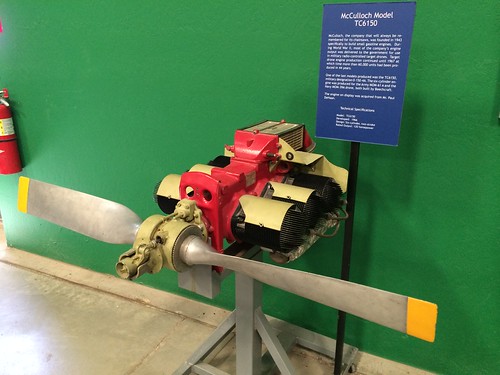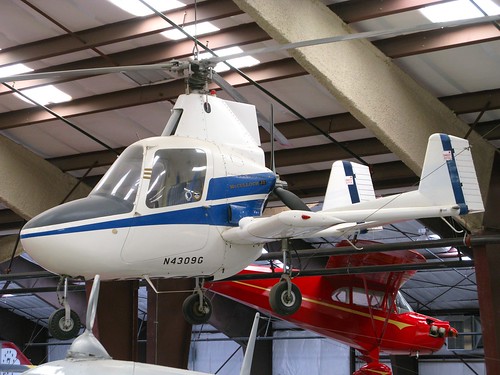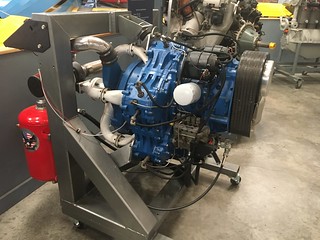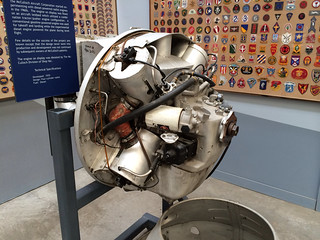This is an older Air-Minded post from April 2014, updated in January 2018 with new photos and descriptions of experimental McCulloch aviation engines. —Paul Woodford
McCulloch: it’s not the first name to spring to mind when you think of aviation, but it’s not a name you should ignore, either.
The McCulloch Motors Corporation was founded in 1943 to make small two-stroke gasoline engines. Initially known for outboard boat motors, today McCulloch makes engines used to power lawn and garden equipment. During the company’s first three decades, McCulloch also made small aviation engines, most of them used to power military target drones. Their aviation engines, like their outboard motors, were two-stroke designs and came in horizontally-opposed two-, four-, and six-cylinder configurations. A number of these reliable little engines have been repurposed to power manned experimental aircraft. Here’s one I photographed at the Pima Air & Space Museum today:

From 1948 until the early 1970s, McCulloch had a subsidiary company, the McCulloch Aircraft Corporation, which produced two manned aircraft: the MC-4 helicopter and the J-2 autogyro.

Only a small number of MC-4s were ever built. The one in the photo was one of the first to fly, a military variant called the HUM-1, which McCulloch hoped to sell to the US Navy. A similar model, the YH-30, was marketed to the US Army. In the end, neither service ordered any, and the few MC-4s built were sold on the civilian market. I don’t think any are still flying today, but it you’d like to see one in action, scan your TV guide for late-night science fiction movies from the 1950s: there’s an MC-4 in the 1954 movie Gog.

McCulloch’s J-2 Autogyro had a larger production run, with more than 80 built. The one in our museum’s collection is a Super J-2 with a three-bladed controllable-pitch propeller. A clutch allowed the helicopter rotor to be spun up by the engine for takeoff, typically a short roll of 25 to 200 feet. Once in flight the helicopter rotor was uncoupled from the engine to rotate freely and act as the aircraft’s wing, with all the propulsion coming from the pusher propeller. The J-2 could fly for slightly more than two hours at about 85 mph, and looks like it would be a lot of fun. The J-2 was one of the few production (as opposed to experimental) autogyros to achieve success in American aviation, and several are still flying today.
In addition to the exhibits I’ve photoblogged above, PASM has several target drones with McCulloch engines, plus two experimental engines that never went into production. The first (left, below) is a five-cylinder two-stroke radial developed in the 1960s as a general aviation powerplant. The second (right, below) is a four-cylinder diesel radial developed in the 1970s for evaluation by NASA.
Earlier today I was scratching my head, wondering why our museum has such a large collection of McCulloch aircraft and engines, but a few minutes ago, while looking up information on the company, I learned that McCulloch moved its headquarters to Tucson, Arizona in 1988. I don’t know that our McCulloch exhibits were donated by the corporation, but let’s hear it for corporate donors anyway!

